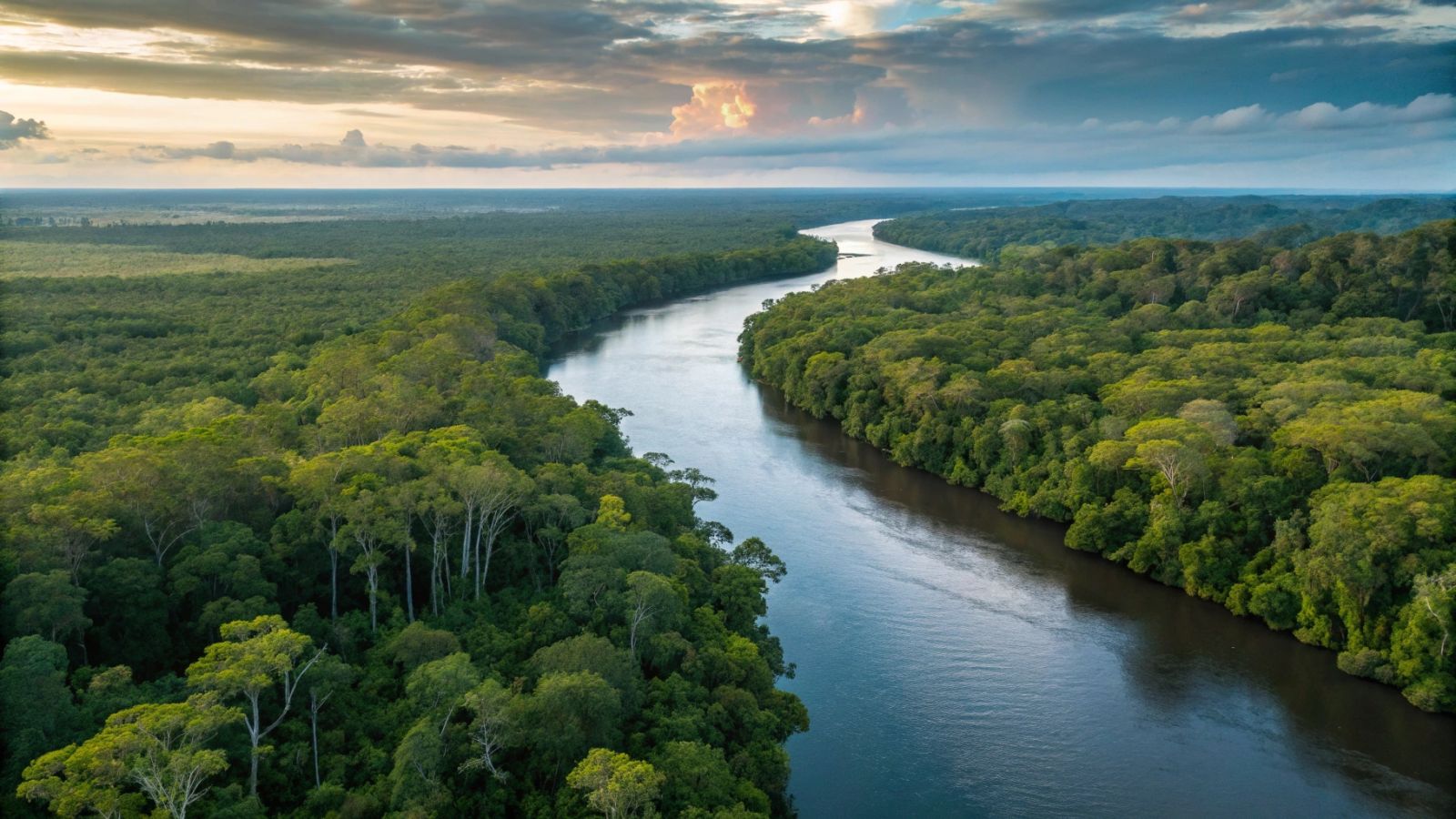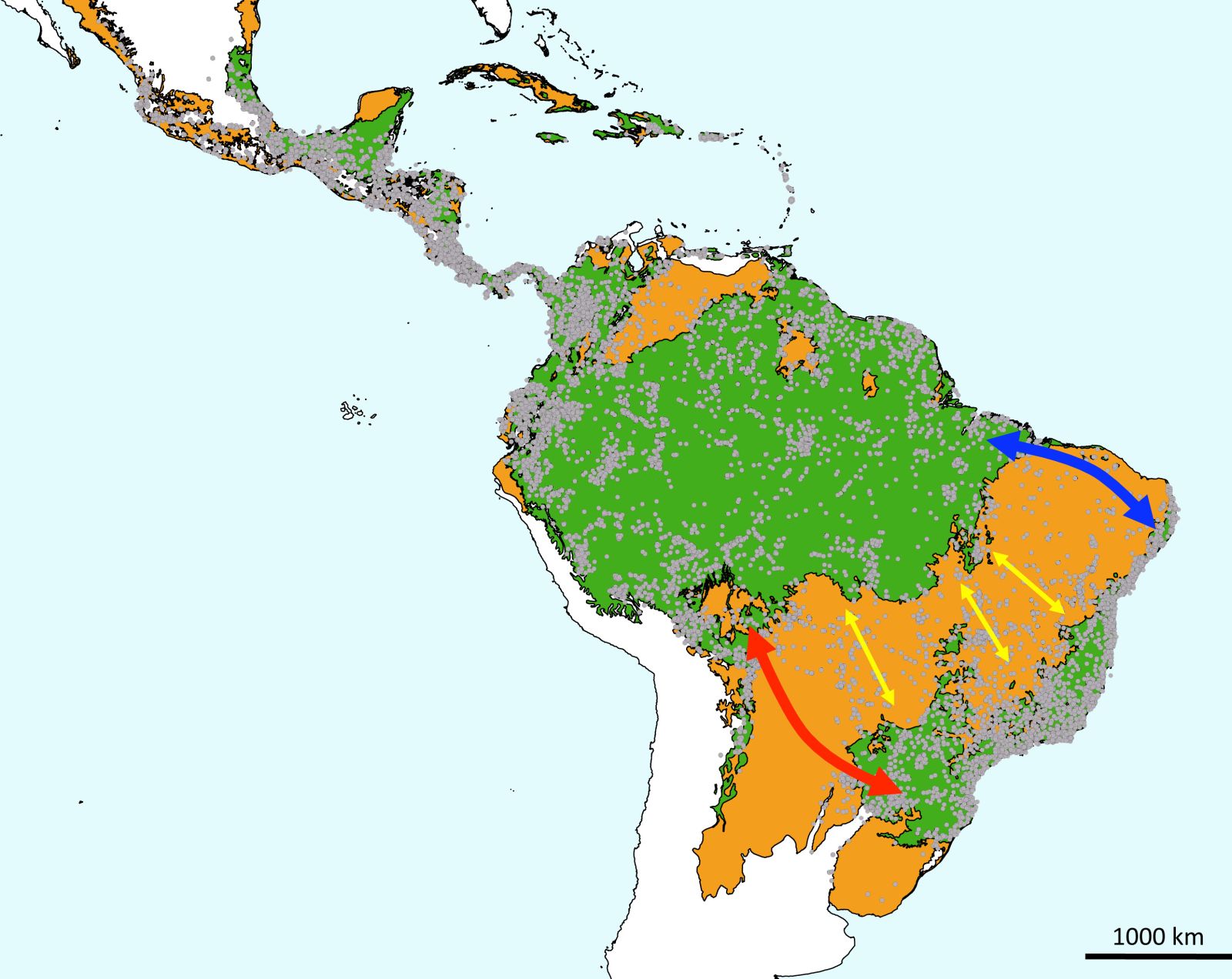Trees use rivers to spread 🌴
Published by Cédric,
Article author: Cédric DEPOND
Source: Proceedings of the Royal Society B
Other Languages: FR, DE, ES, PT
Article author: Cédric DEPOND
Source: Proceedings of the Royal Society B
Other Languages: FR, DE, ES, PT
Follow us on Google News (click on ☆)

The overlooked role of rivers
Researchers have discovered that tree seeds, carried by watercourses, gradually colonize the Atlantic forests. This phenomenon, called hydrochory, allows species to cross otherwise hostile regions. Rivers thus become "highways" for biodiversity.
This dispersal occurs over millennia, with generations of trees growing along the banks. The seeds, floating on the surface, travel long distances before taking root in new habitats. This slow but steady process explains the presence of common species in both forests.
A mainly unidirectional migration
The study, published in Proceedings of the Royal Society B, focused on 164 tree species of the genus Inga. Genetic analyses showed that the majority of migrations occur from the Amazon to the Atlantic forests. Only a few species have made the reverse journey.
This asymmetry is explained by the size of the Amazon, which produces more seeds. Researchers have identified 16 to 20 cases of successful colonization, spread over millions of years. These results challenge the idea that these migrations were linked to specific climatic periods.

Map of the main biomes of Latin America showing the disjointed distribution of tropical rainforests and the dry diagonal in South America. Occurrences of Inga (gray circles, 39,312 validated records) are superimposed. Tropical and cloud forests are in green, dry biomes (savanna, dry forest, chaco, flooded grasslands) in orange. Arrows indicate historical or current connections between the Amazon and the Mata Atlântica: blue (NE route), red (SE-NW route), yellow (gallery forests across dry biomes). Thick arrows highlight the importance of the NE and SE-NW routes.
Implications for conservation
The Atlantic forests, although smaller than the Amazon, are home to exceptional biodiversity. They contain about 3,000 more plant species than their Amazonian neighbor. However, only 20% of their original area remains today.
The protection of riparian forests is essential to maintain these ecological connections. Researchers emphasize the importance of preserving these natural corridors, which allow species to adapt to environmental changes.
To go further: What is hydrochory?
Hydrochory is a natural mechanism of seed dispersal by water. This process allows certain plants, particularly trees, to colonize new distant habitats thanks to watercourses. The seeds, often equipped with floating structures, are transported over long distances before taking root.
This phenomenon is particularly important in riverine and coastal ecosystems. It explains how plant species can cross hostile areas, such as arid regions, to reach environments more conducive to their growth.
Hydrochory plays a key role in the connectivity of ecosystems. It allows forests separated by geographical barriers to share common species. This process is essential for maintaining biodiversity and the resilience of natural habitats.
Finally, hydrochory highlights the importance of preserving watercourses and riparian forests. These natural corridors are vital for the dispersal of species and their adaptation to environmental changes, particularly in a context of deforestation and global warming.